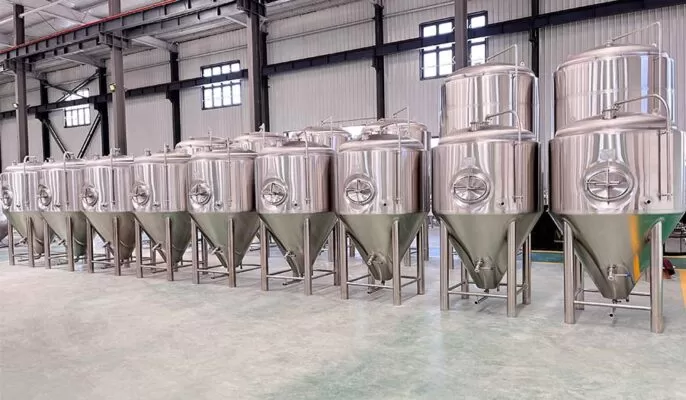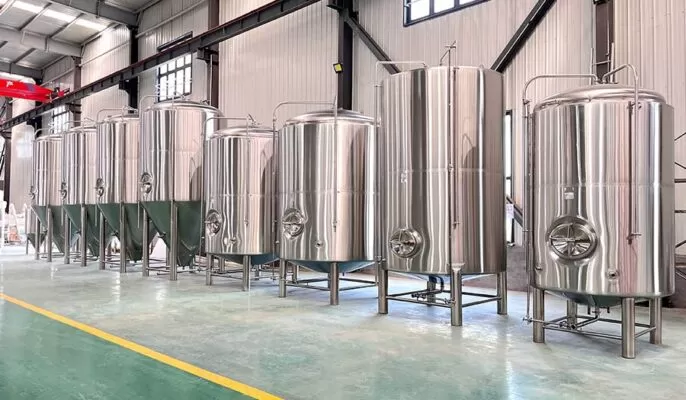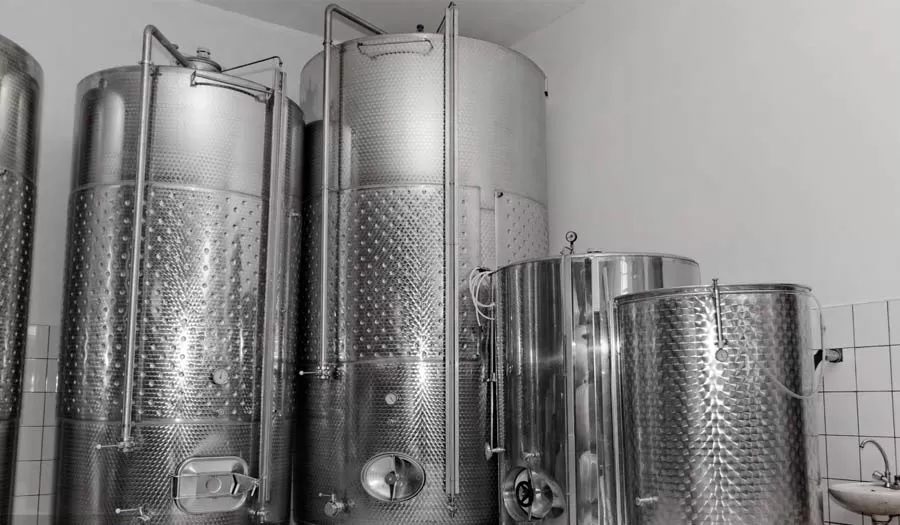Regardless of the size of the process, the process of brewing lagers, ales, ales, stouts, and IPAs requires careful design and a fermentation atmosphere. The fermentation stage is particularly important for the outcome of the mix, and cooling the mix using an external brewery fermenter lid cooling unit is a very effective way of keeping fermentation temperatures at an optimal level. To prevent the fermentation mixture from being exposed to undesirable temperature levels, brewers often try to cool the process. For breweries that produce beverages on a large scale, the most effective way to ensure optimal temperature regulation is to use a fermentation cooling jacket combined with a brewery chiller or a winery glycol chiller.
What is a jacketed fermenter?
Honeycomb jacketed board is a board made of two stainless steel sheets that are punched and bonded to both sides of a thicker honeycomb core material. Also called honeycomb sandwich structure. It has the characteristics of light weight, good sound insulation effect and good elasticity.
Fermentor/wine tank cooling jackets are a temperature regulation technology that cools beer from the outside. Standard tank cooling jackets are made of flexible material with cavities through which coolant (usually a mixture of glycol and water) flows. When wrapped around a winery or brewery vat, a glycol jacket absorbs the heat within it.

How does a fermenter cooling jacket work?
The fermentor cooling jacket consists of a flexible material in which the coolant channels run. When wrapped around a brew barrel, the coolant flowing within the jacket’s channels will absorb heat from the brewing liquid through a simple heat exchange process.
Advantage:
- adjustable temperature levels allow for more even cooling and fermentation
- Accidental contamination is prevented as the integrity of the tank is not compromised
- Easy to install and maintain
The fermentation tank cooling jacket is an integral part of the entire brewery cooling unit. Industrial chillers help re-cool the heated coolant returning from the tank cooling jacket, preparing it for recirculation. The chiller keeps the coolant at optimal wine or beer fermentation temperature.
Suitable temperature
Each yeast strain has its own preferred operating temperature to produce the highest quality yield. For example, Saccharomyces cerevisiae (the most common yeast strain) prefers operating temperatures of 30° C (86° F) to 45° C (113° F). Anything hotter or colder will inhibit productivity. So, to maintain optimal production times and yields, managing fermentation temperature is key.
Cooling jacket on fermentation tank
The fermentation cooling jacket is an more skin surrounding the main vessel. a cooling jacket on a fermenter acts like another tank that wraps around the inside walls of the fermentation vessel. There are inlets and outlets that allow the cooling medium to circulate through the jacket. the flow rate of the cooling medium can be used to control the temperature of the fermentation. A jacket, put, is a heat exchanger that transfers heat between two fluids. One liquid is our cooling medium and the other liquid is our fermenting beer or wine.
The importance of temperature-controlled fermentation tanks
Brewing the perfect tasting beer requires several factors. one of the most important factors is maintaining the ideal temperature during fermentation. But it’s definitely important to keep the temperature up, because if the wort gets too hot, your beer may taste fruity. If your fermenter is cooler than desired, it may not ferment, affecting quality and flavor. Typical wine fermentation temperatures range from 40 degrees Fahrenheit to 80 degrees Fahrenheit. It is often difficult to maintain brewing conditions in larger fermenters within this narrow range using a simple cooling fan and bathtub. In these cases, a temperature-controlled fermenter is a better choice.

Methods for Cooling Fermentation Vessels
Cooling of the fermentation vessel can be achieved by using a cooling device immersed in the fermentation broth or using a fermentation tank cooling jacket.
Cooled fermentation tank
In some cases, cooling rods or coils can be introduced into the brewing fluid to maintain the desired temperature. While this technology is cheap and easy to set up, it also has significant Drawbacks.
First, introducing an immersion cooler or plate cooler to fermenting wine increases the beer’s exposure to microorganisms and rapid oxidation, which can alter the flavor. Additionally, internal cooling reduces cooling efficiency. Uneven cooling of the fermentation barrel can lead to the formation of hot and cold spots and uneven fermentation.
External cooling fermentation tank
Cooling beer using an external fermenter wrap cooling unit is a effective way to maintain brewing temperatures at optimal levels. An external brew cooling jacket will provide even cooling without subjecting the liquid inside the container to microbial contamination and unnecessary oxidation.
Lce bath
As the name suggests, this immersion cooling method only requires a large tub filled with ice cubes, or better yet, a frozen water bottle. The water bottles will stay frozen longer, which is definitely a bonus while you’re waiting for the fermentation process to take place for at least two weeks.
What is the ideal coolant to use in a wine cooling jacket?
In most cases, a mixture of ethylene glycol and water (30% ethylene glycol solution) is the best coolant to use in wine tank cooling jackets. Listed below are some of the main advantages of using ethylene glycol as coolant:
- Ethylene glycol retains heat longer than water, increasing efficiency
- It can provide more lubrication for the chiller pump
- Ethylene glycol has anti-freeze properties so it can be cooled to sub-zero temperatures without freezing and clogging cooler pipes
Micet adopts double-stage cooling with dimple jacket, which covers the cone bottom and straight wall. According to the pressure-holding requirements of the tank and by the drawings, the punching distance and punching arc of the pit jacket are designed. stamping. Miller panels have a consistent honeycomb shape that allows the tank to be stressed when maintaining pressure. Long service life and strong pressure bearing capacity.




